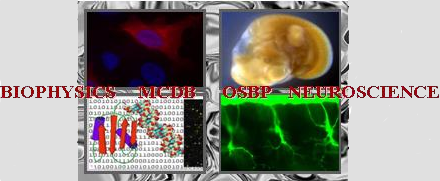Poster abstracts
Poster number 44 submitted by Jalal Siddiqui
Modeling the Response of Cardiac Troponin C to Calcium on the Thin Filament: Effects of Disease-Related and Post-Translational Modifications
Jalal Siddiqui (Biophysics), Bin Liu (Physiology and Cell Biology), Shane Walton (Biophysics), Vikram K. Shettigar (MCDB), Andrew J. ONeil, Peeyush Shrivastava, Nathan Neilson, Grace Davis (Physiology and Cell Biology), Svetlana Tikunova and Brandon Biesiadecki (Physiology and Cell Biology)
Abstract:
Calcium binding to and dissociation from cardiac troponin C (TnC) are essential steps leading to cardiac muscle contraction/relaxation. It is well documented that the calcium binding properties of TnC are not constant, but are sensitive to complex interactions between the additional thin and even thick filament proteins. There is a growing body of evidence that protein modifications/mutations within different subunits of the troponin complex (troponin T, troponin I) exert their effects by altering the apparent TnC calcium sensitivity/exchange kinetics. There are a number of potential mechanisms that could alter the calcium binding properties of TnC, potentially the most significant being the ability of the regulatory domain of TnC to bind the switch peptide region of TnI. We have developed a rather simple mathematical model that can simulate the steady-state and kinetic calcium binding properties of a wide assortment of disease-related and post-translational protein modifications in the isolated troponin complex and reconstituted thin filament. We propose that roughly half of the studied modifications do not alter any of the intrinsic TnC calcium binding constants but rather alter the ability of TnC to “find” TnI in the presence of calcium. Considering TnI is essentially tethered to TnC and cannot diffuse away in the absence of calcium and that TnI also binds to actin, we suggest that the apparent calcium binding properties of TnC are highly dependent upon an “effective concentration” of TnI available to bind TnC.
Keywords: Cardiac Muscle, Troponin , Mathematical Model
